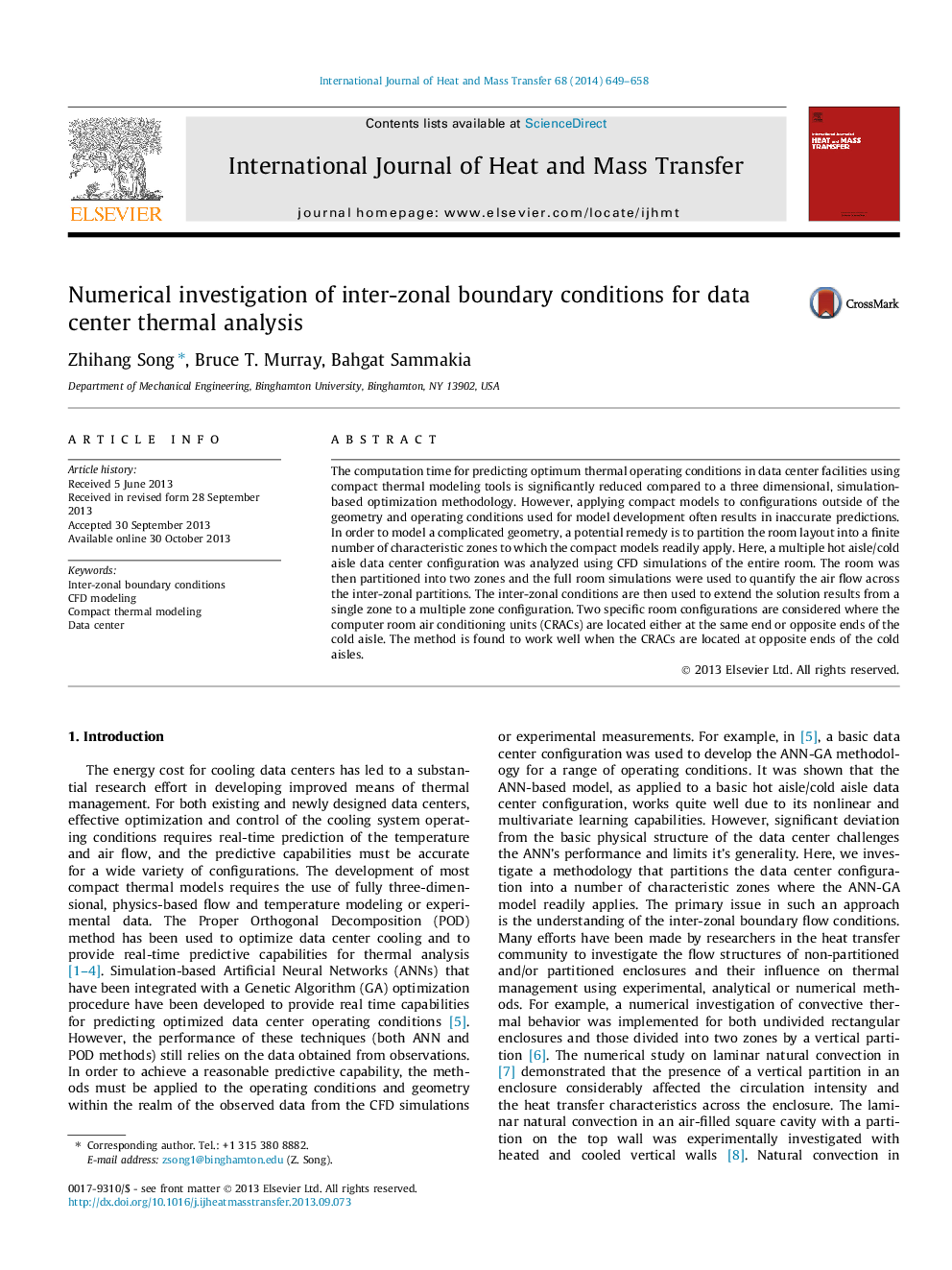| Article ID | Journal | Published Year | Pages | File Type |
|---|---|---|---|---|
| 658079 | International Journal of Heat and Mass Transfer | 2014 | 10 Pages |
Abstract
The computation time for predicting optimum thermal operating conditions in data center facilities using compact thermal modeling tools is significantly reduced compared to a three dimensional, simulation-based optimization methodology. However, applying compact models to configurations outside of the geometry and operating conditions used for model development often results in inaccurate predictions. In order to model a complicated geometry, a potential remedy is to partition the room layout into a finite number of characteristic zones to which the compact models readily apply. Here, a multiple hot aisle/cold aisle data center configuration was analyzed using CFD simulations of the entire room. The room was then partitioned into two zones and the full room simulations were used to quantify the air flow across the inter-zonal partitions. The inter-zonal conditions are then used to extend the solution results from a single zone to a multiple zone configuration. Two specific room configurations are considered where the computer room air conditioning units (CRACs) are located either at the same end or opposite ends of the cold aisle. The method is found to work well when the CRACs are located at opposite ends of the cold aisles.
Keywords
Related Topics
Physical Sciences and Engineering
Chemical Engineering
Fluid Flow and Transfer Processes
Authors
Zhihang Song, Bruce T. Murray, Bahgat Sammakia,
